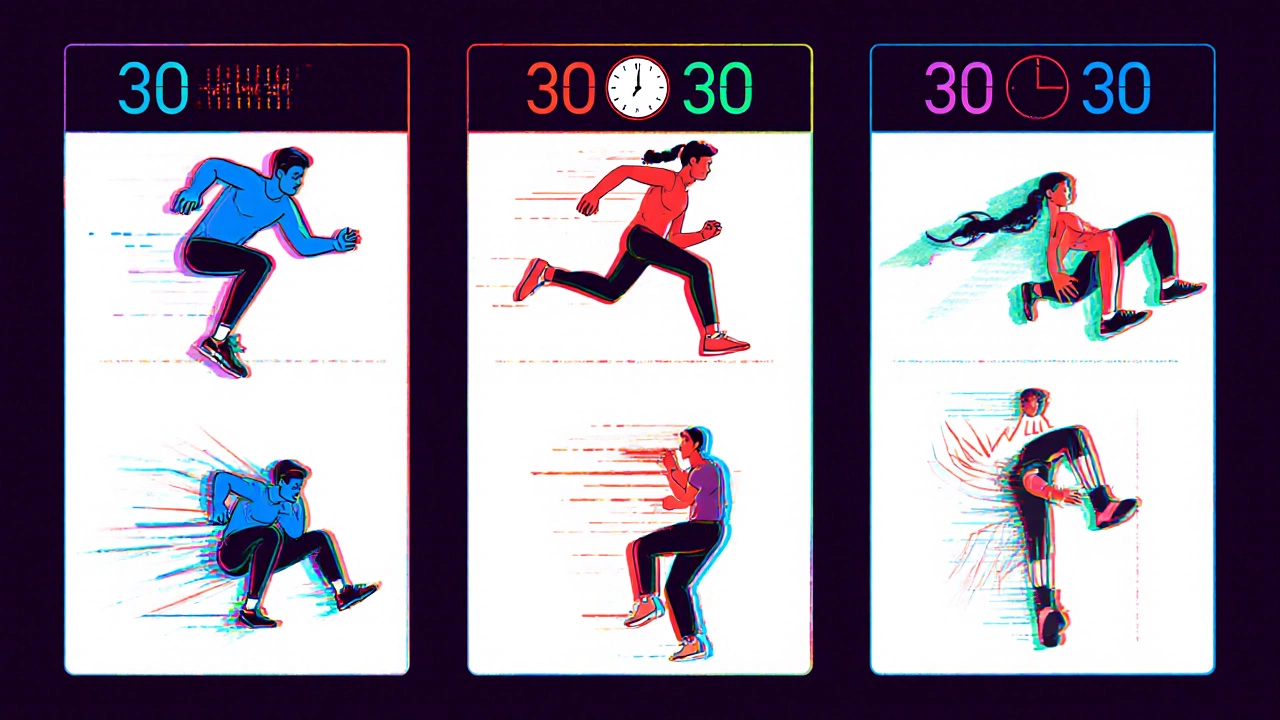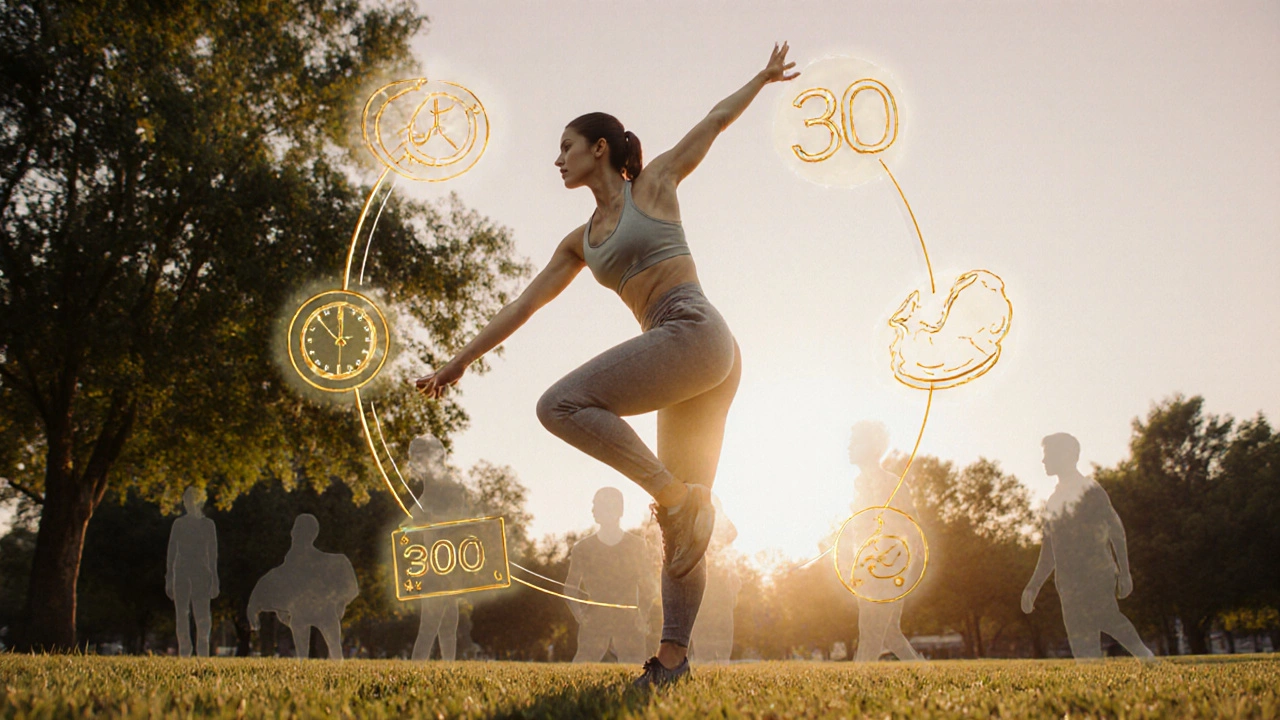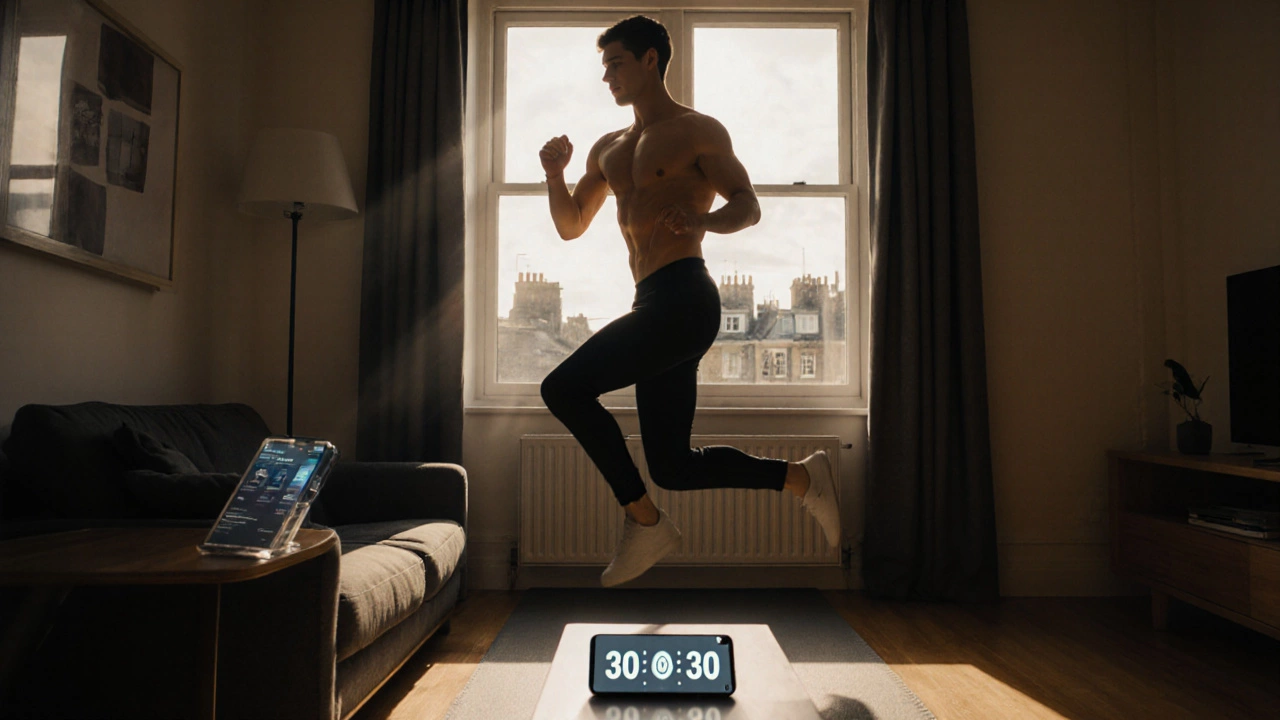30 by 30 Calorie Burn Calculator
Calorie Burn Estimator
Estimate calories burned during a 30 by 30 HIIT workout based on your personal stats and effort level.
Estimated Results
Imagine torching 300 calories in a single 30‑minute session without any equipment. That’s the promise of the 30 by 30 workout, a no‑excuse, time‑efficient routine that’s been gaining traction in gyms and living rooms alike.
Defining the 30 by 30 Workout
The 30 by 30 format is a specific flavor of high‑intensity interval training (HIIT) where you perform an exercise for 30 seconds, then rest or transition for 30 seconds. Repeat the cycle for a total of 30 minutes, usually covering 10‑12 different movements. The cadence keeps heart rate elevated while giving brief recovery windows, making the body work in a near‑maximal state for the majority of the session.
How It Fits Inside the HIIT Landscape
HIIT itself is a broad umbrella that includes protocols like Tabata (20 seconds on, 10 seconds off) and sprint intervals. The 30 by 30 method sits in the middle, offering a slightly longer work interval that feels more sustainable for beginners yet remains intense enough for seasoned athletes. Because the work‑to‑rest ratio is 1:1, you spend half the time actively moving, which translates to a higher calorie‑burn per minute compared to steady‑state cardio.
Core Structure and Typical Exercise List
A typical 30 by 30 session might look like this:
- Jumping jacks - 30 seconds
- Rest - 30 seconds
- Burpees - 30 seconds
- Rest - 30 seconds
- Jump squats - 30 seconds
- Rest - 30 seconds
- Mountain climbers - 30 seconds
- Rest - 30 seconds
- Push‑ups - 30 seconds
- Rest - 30 seconds
- High knees - 30 seconds
- Rest - 30 seconds
After you cycle through all moves, you start again until the clock hits 30 minutes. The routine is fully bodyweight training based, so you can do it on a mat, in a park, or in a cramped apartment.
Key Benefits
- Calorie efficiency: Studies from the American Council on Exercise (ACE) show that a 30‑minute HIIT session can burn 10‑15% more calories than a 45‑minute jog.
- Metabolic boost: The post‑exercise oxygen consumption (EPOC) stays elevated for up to 24 hours, meaning you keep burning fat long after the timer stops.
- Time savings: Ten minutes of warm‑up and cool‑down plus 30 minutes of work fits neatly into a busy schedule.
- No equipment needed: All movements rely on bodyweight, eliminating the barrier of gym membership.
- Scalable intensity: You can increase difficulty by adding dumbbells, wearing a weighted vest, or shortening the rest periods.
Sample 30‑Minute Routine (Beginner Friendly)
Follow the steps below to get a feel for the cadence. Perform each exercise with good form; quality beats speed.
- Warm‑up: 5 minutes of dynamic stretches (leg swings, arm circles).
- Round 1 - 6 moves:
- 30 seconds burpees
- 30 seconds rest
- 30 seconds jump squats
- 30 seconds rest
- 30 seconds mountain climbers
- 30 seconds rest
- Repeat the six‑move block five times (30 minutes total).
- Cool‑down: 5 minutes of static stretching, focusing on quads, hamstrings, and shoulders.

Progression Strategies
Once the basic circuit feels easy, try one of the following upgrades:
- Increase rounds from five to eight, extending total time to 48 minutes.
- Swap a bodyweight move for a weighted version (e.g., goblet squats with a kettlebell).
- Trim rest to 15 seconds, nudging the work‑to‑rest ratio to 2:1.
- Combine two moves into a compound (e.g., burpee‑to‑push‑up) to raise muscular demand.
Common Mistakes and How to Fix Them
- Skipping rest: The 30‑second pause isn’t “wasted” time; it lets the cardiovascular system reset enough to sustain intensity.
- Poor form for speed: Bad technique sacrifices joint safety. Start each movement slowly, then add speed once the pattern feels natural.
- Over‑reliance on cardio moves: Mix strength‑based exercises (e.g., dumbbell rows) to keep muscles balanced.
- Ignoring warm‑up/cool‑down: Jumping straight in raises injury risk, especially for high‑impact jumps.
Who Should Try the 30 by 30 Workout?
Anyone with a baseline level of fitness can start, but consider these factors:
- Beginners: Stick to low‑impact variants (e.g., step‑backs instead of jump squats) for the first two weeks.
- People with joint issues: Replace high‑impact moves with kettlebell swings or rowing‑type motions.
- Athletes: Use the routine as a conditioning finisher after strength sessions.
- Busy professionals: The 30‑minute window slots nicely between meetings or after work.
How It Stacks Up Against Other Interval Methods
| Metric | 30 by 30 | Tabata (20/10) | Steady‑State (45 min jog) |
|---|---|---|---|
| Work interval | 30 seconds | 20 seconds | Continuous |
| Rest interval | 30 seconds | 10 seconds | None |
| Total active time | 15 minutes | 8 minutes | 45 minutes |
| Average calorie burn | ~300 kcal | ~250 kcal | ~350 kcal |
| Equipment needed | None | None | Running shoes |
| Suitability for beginners | Medium - can modify moves | High - short bursts | High - low intensity |
Tips for Staying Consistent
- Set a timer app with built‑in interval presets; the visual cue keeps you on beat.
- Track each session in a notebook or app and note perceived exertion (scale 1‑10).
- Pair the workout with a playlist that has 60‑second song segments to match the 30‑second intervals.
- Schedule the session at the same time each day-habit formation works best with routine.

Can I do the 30 by 30 workout if I’m new to exercise?
Yes. Swap high‑impact moves for low‑impact alternatives (e.g., step‑backs instead of jump squats) and keep the intensity moderate for the first two weeks.
How many calories does a 30 by 30 session burn?
Depending on body weight and effort level, you can expect to burn roughly 300 calories in a 30‑minute session, plus additional post‑exercise oxygen consumption.
Is the 30 by 30 workout safe for people with knee problems?
Replace high‑impact jumps with hinge‑based moves like kettlebell swings or seated leg extensions. Always check with a medical professional before starting.
What’s the best way to track progress?
Log the number of rounds completed, perceived exertion, and any modifications made. Over weeks, you’ll see improvements in speed, reduced rest need, and lower heart‑rate recovery.
Can I combine the 30 by 30 workout with strength training?
Absolutely. Use the 30 by 30 as a conditioning finisher after a weight‑lifting day, or alternate days to give muscles time to recover.










